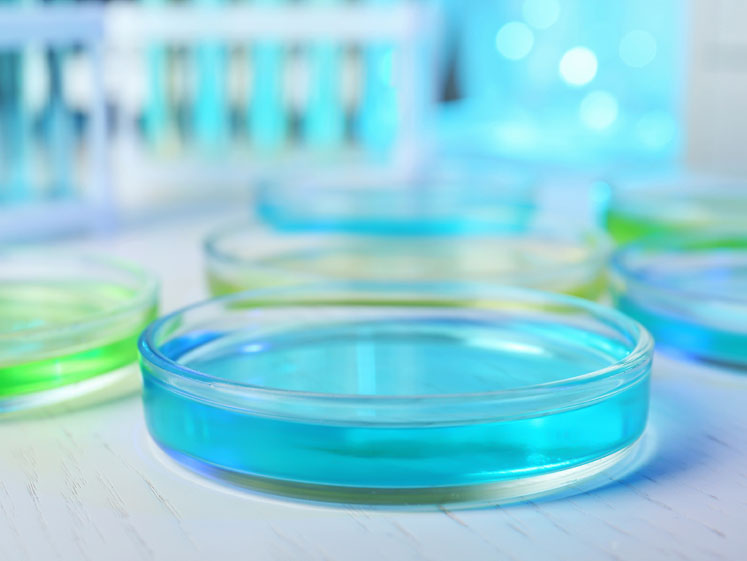KSR: What are bispecific antibodies and what benefits do they offer compared with “traditional” monoclonal antibodies?
GB: Bi/multispecific antibodies are antibodies that can bind two or more different targets; there are a variety of different formats that can be utilised to accomplish this, including 3-chain, 4-chain, antibody fusions and single chain varieties.
Bispecifics have many potential benefits compared with monoclonal antibodies, including their ability to boost drug effects through the recruitment of specific cell types to the site of a disease and the potential to reduce treatment resistance as they can target multiple pathways.
They can be used in infectious diseases to target multiple different epitopes that may be required to block the effects of various viruses and bacteria, an example of which is currently in the pipeline is a prophylactic for HIV/AIDS.
A number of potential therapies are also in the clinic for other viral or bacterial diseases that require multiple antibodies. In the future, it would be more cost-effective if those products could be made as a single bi- or multispecific product.
KSR: As an emerging technology, I understand that the engineering and manufacturing process can be problematic. How is Catalent addressing these hurdles?
GB: Bi/multispecific antibodies can be a challenge to express with high titres because they often require three or more distinct genes to be expressed, compared with traditional monoclonal antibodies that only need two.
For cell line development technologies that require selection markers, it can become problematic to use multiple markers as a result of each gene requiring its own selection marker.
It is important to be able to dial-in the expression of each gene so that the cell can express the gene products in the correct ratio to get the best quality protein.

Greg Bleck
Catalent’s experience includes working with numerous bispecific antibodies across a variety of formats, including 3-chain, 4-chain, antibody fusions, single chain and multispecifics.
Our proprietary cell line development technology, GPEx, enables us to titrate the correct amount of gene to ensure that the cell can properly assemble the bispecific molecule.
The GPEx platform is very robust and enables high expression, even in difficult-to-express proteins. It can also be used with a variety of cell lines; so, if it’s determined that CHO is not the most suitable cell line for a certain programme, then that’s not a barrier. We also have robust process development capabilities and tools to optimise the cell culture process to improve titres.
These include the Berkeley Lights Beacon clonal selection system, which enables the fast identification of high-expressing clones, and the Sartorius Ambr system, which enables the selection of optimal cell culture conditions for the cell line.
KSR: From an analytical perspective, what extra steps are required to produce high quality bispecific antibodies that might not be required for other therapeutics?
GB: Analytical testing can be a challenge for bispecifics because verification that the protein has the correct ratio of the different chains is needed … and we need to know that it binds to the various targets it was designed to.
Detailed analytics and analytical development are required early for most of these molecules; furthermore, they need to be implemented into the process to make sure the correct molecule is being produced and the best clonal cell line is identified.
More complex mass spectrometry characterisation and cell-based assays are also required to confirm the correct structure and function. For example, reverse phase high performance liquid chromatography (HPLC) and high-resolution mass spectrometry can be leveraged for intact and deglycosylated mass analysis, impurity profiles and more detailed subunit analysis.
KSR: I also read that there may be problems with immunogenicity; can you comment on how this can be overcome in the future?
GB: There are hundreds of different structures/formats for bi- and multi-pecific molecules. For many of these, various novel types of molecule fusions are needed to produce the correct structure, and the sequences generated by the fusions can produce unique epitopes that increase the immunogenicity of these engineered proteins.
For other types of designs, these unique epitopes are minimal and the resulting molecules do not have these immunogenicity problems.
Moving forward, the designs resulting in lower immunogenicity will be identified and favoured, and the sequence liabilities in some of the more immunogenic formats will be mutated to reduce the immune response in patients.
Because there are so many different formats to choose from, immunogenicity is unlikely to be a problem that cannot be overcome for individual combinations of antibodies.

However, there may be some unique bispecific structural formats that will be more consistently immunogenic and unable to be remedied through protein engineering. For this reason, those specific formats may become unfavourable for developers and innovators in the future.
KSR: Looking ahead, do you foresee any problems scaling-up the production of bispecific antibodies to commercial scale?
GB: The potential issues with scale-up are somewhat dependent on the format of the molecule, but this is where the titre and protein quality become even more important considerations.
If you start with a low titre during clinical-scale manufacturing, because the cell line development and process development platform was not well-suited for bispecifics, then this can sometimes be manageable because the clinical demand might be low enough that it can be met with just one, or only a few batches.
However, as scale-up manufacturing is required for larger volumes to address commercial demand, low titres can have a significant impact on the cost of goods.
Ensuring batch-to-batch consistency is another area that can be an issue when scaling up the production of bispecifics. If the cell line is unable to generate a homogenous population of bispecifics each time, this could lead to the failure of batches that are out of specification, which can be costly. Otherwise, most other aspects of scaling are similar to traditional antibodies or recombinant proteins, depending on the bispecific format.
KSR: Will existing plant and facilities be compatible with large-scale production or will industry need to invest in new (single-use, more agile) technologies?
GB: Much of the conventional wisdom around the manufacture of biologics still applies to bispecifics. For example, if manufacturing is taking place in a small-scale/multiproduct facility, then single-use reactors and technology make a lot of sense; conversely, in large scale facilities, stainless steel is the only realistic option.
If the end product is highly unstable, it may be that continuous processing could be a viable solution, but that comes with its own considerations, such as carrying out in-process analytics. If you’re using a low-expressing cell line, then it may be beneficial to investigate an intensified process, which could help to improve efficiencies and provide the potential to shorten batch times and increase output.
KSR: What can be done to make the finished products viable from a patient affordability point of view?
GB: As with other drugs, factors such as the patient population size, disease indication, route of administration and dosage would be the key drivers of pricing.
But for some patient indications, bispecific antibodies could actually help with affordability, such as in cases when a patient with a specific disease state may currently receive two or more antibodies as a therapy; then, a multispecific antibody therapy binding each of those targets will potentially cut patient cost.
In addition, a number of the bispecific products in development are cancer products that look to mimic what a CAR-T cell therapy does in patients. Currently, a bispecific product would be much cheaper to manufacture than a CAR-T cell therapy, which could possibly translate to lower patient cost.
